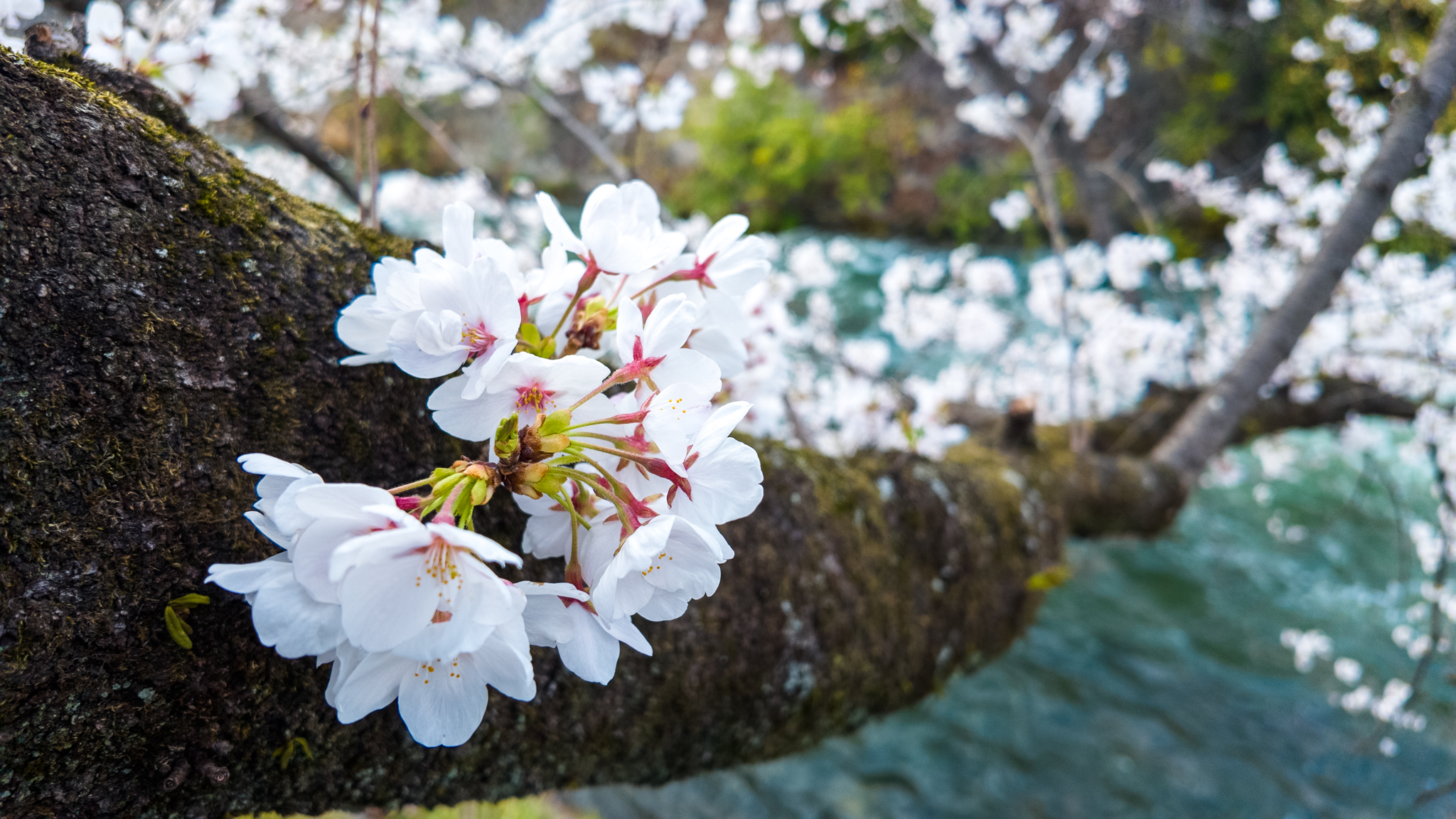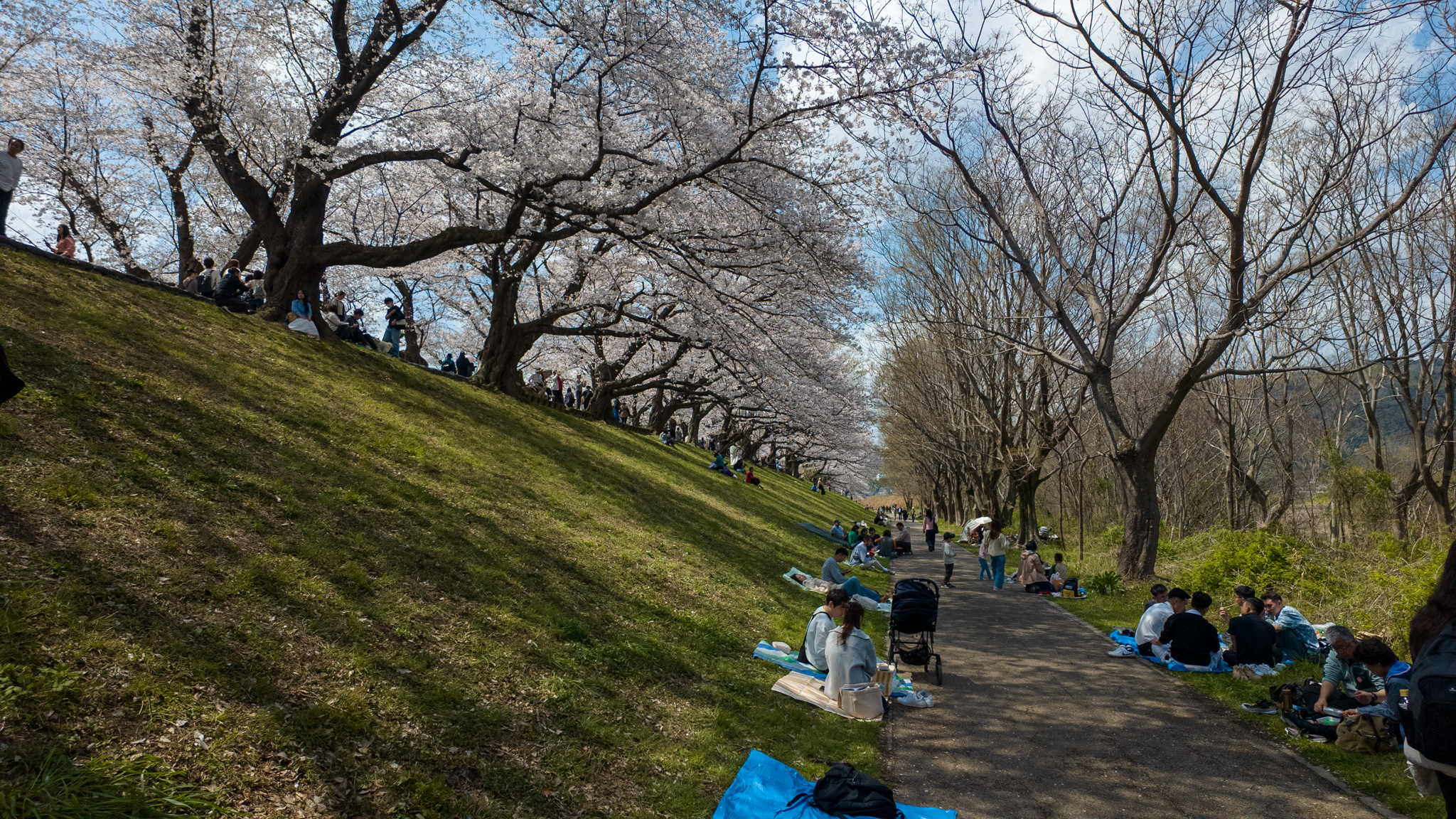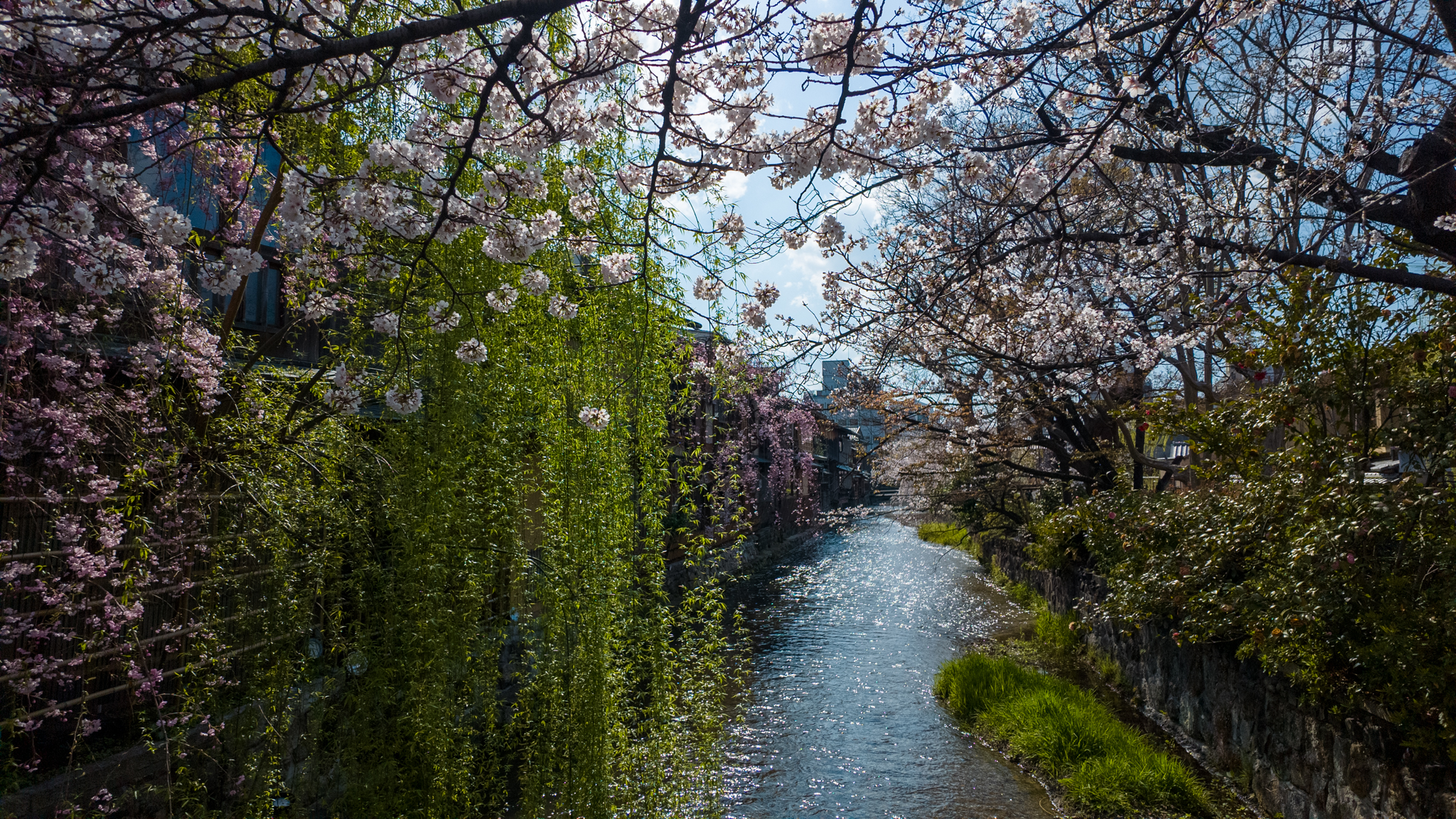Hanami (花見) is a traditional Japanese celebration that marks the arrival of spring through the viewing of cherry blossoms (sakura). Literally meaning “flower (hana) viewing (mi),” hanami has for centuries symbolized not only admiration for nature, but also key aspects of Japanese cultural identity—such as an aesthetic appreciation for seasonality and the philosophical notion of impermanence (mono no aware).
The event is most closely associated with the pale pink blossoms of the Someiyoshino cherry tree, which bloom for only a short period. Hanami takes place from March to May, progressing from the south to the north of Japan in accordance with the sakura blooming season.

A Sakura Tree (taken by Ömer Faruk Bilcan)
History and Cultural Evolution
The tradition of hanami has its roots in early agricultural rituals and aristocratic poetry gatherings. The earliest forms of hanami are believed to date back to the Nara period (710–794), when people celebrated the renewal of nature by viewing ume (plum) blossoms. Over time, sakura (cherry blossoms) gained prominence, and during the Heian period (794–1185), hanami became an aesthetic pursuit among the aristocracy. The first imperial hanami is said to have been hosted by Emperor Saga in 812 at Jishu Shrine in Kyoto, helping establish the practice within courtly circles. One theory about the symbolic origin of sakura suggests that the syllable “sa” refers to the deity of rice fields, while “kura” denotes the place where the deity resides—thus, cherry blossoms came to symbolize prayers for a bountiful harvest.
During the Azuchi–Momoyama (1568–1600) and Edo (1603–1868) periods, hanami became increasingly popular among the general population. Following Tokugawa Ieyasu’s establishment of peace, hanami evolved into a widespread festivity across social classes. The lavish hanami events organized by Toyotomi Hideyoshi at Yoshino and Daigoji combined aesthetic expression with political spectacle, incorporating tea ceremonies, poetry, performing arts, and opulent attire. In the Edo period, cherry blossoms became a central motif in ukiyo-e (woodblock prints), and hanami became firmly embedded in the cultural life of urban residents.
Modern Period and Media
In contemporary Japan, hanami is not only an occasion for observing nature but also functions as a seasonal rite of passage, marking the beginning of the new school and fiscal year. The progression of the bloom is closely followed through daily meteorological reports known as the “sakura front” (sakura zensen), which track the flowering from south to north. Television, newspapers, and online platforms publish maps that detail the blossoming stages—from the first bloom to full bloom.
In the modern era, hanami has also become intertwined with popular culture and consumer economy. Seasonal sakura-themed products—such as foods, beverages, clothing, and souvenirs—are widely marketed during this period, reflecting both commercial trends and cultural enthusiasm for cherry blossoms.
Festival Practices and Social Life
Hanami is typically celebrated through communal picnics held in crowded parks, temple gardens, riversides, or beneath cherry trees within cities. Participants often arrive early in the morning to reserve spots with plastic tarps, preparing for festivities that last into the evening. In corporate settings, the task of securing a picnic spot traditionally falls to newly hired employees. During hanami gatherings, people enjoy traditional bento lunch boxes along with seasonal foods such as dango (sweet rice dumplings), takoyaki (octopus balls), yakisoba (fried noodles), and karaage (fried chicken). The events often include sake drinking, singing, and dancing.
Evening events, known as yozakura (“night sakura”), offer a different visual experience under artificial lighting. Nighttime illuminations—such as those along Kyoto’s Shirakawa River—create a magical atmosphere, highlighting the aesthetic dimensions of cherry blossoms in a unique and enchanting way.

Picnic Below Sakura Trees (taken by Ömer Faruk Bilcan)
Fireworks and Nighttime Displays
The arrival of summer in Japan is celebrated with colorful fireworks lighting up the night sky, a tradition known as hanabi—literally meaning “fire flowers” in Japanese. Firework festivals held throughout the summer are one of the ways in which the Japanese mark seasonal transitions and express appreciation for the beauty of nature. These events are not only visual spectacles but also carry historical and cultural significance. For instance, the Sumida River Fireworks Festival, which dates back to the Edo period, reflects both long-standing traditions and a communal form of entertainment.
Fireworks displays typically take place on summer evenings, drawing large crowds who watch in awe as grand “flowers of fire” burst across the sky. A variety of fireworks are used in these shows, such as warimono (classic spherical bursts), katamono (shaped fireworks like hearts or butterflies), and shikake hanabi (mechanical or floating fireworks that ignite on water or from suspended structures).
Types and Symbolism of Cherry Blossoms
Japan is home to over 300 varieties of cherry blossoms. The most widespread is Someiyoshino (Prunus × yedoensis), developed in Tokyo during the 19th century. Since it is genetically cloned, it blooms simultaneously across the country, making it the emblematic flower of hanami. Other notable types include Shidarezakura (weeping cherry), known for its drooping branches, and Yaezakura, with its dense, multi-layered petals. The Takizakura (“waterfall cherry”) in Miharu is over a thousand years old and revered as one of Japan’s three sacred trees.
Sakura is more than just a tree or flower—it is a powerful cultural symbol for the Japanese. It represents the fleeting beauty of life, as well as purity, simplicity, and spiritual transition. Closely associated with the samurai ethos, cherry blossoms evoke the impermanence of existence. During World War II, sakura motifs appeared on the aircraft of kamikaze pilots, symbolizing the noble but ephemeral nature of sacrifice. In the postwar era, cherry blossoms have come to represent peace and renewal.
Global Spread and Diplomatic Significance
In 1912, the donation of 3,000 cherry trees from Tokyo to Washington, D.C. marked the first symbolic representation of hanami outside Japan. Today, cherry blossom festivals held in countries such as the United States, the United Kingdom, Türkiye, and China highlight not only the global appeal of sakura, but also its role as a form of Japan’s soft power and a symbol in diplomatic relations.

Sakura Trees at Shirakawa, Kyoto (taken by Ömer Faruk Bilcan)


